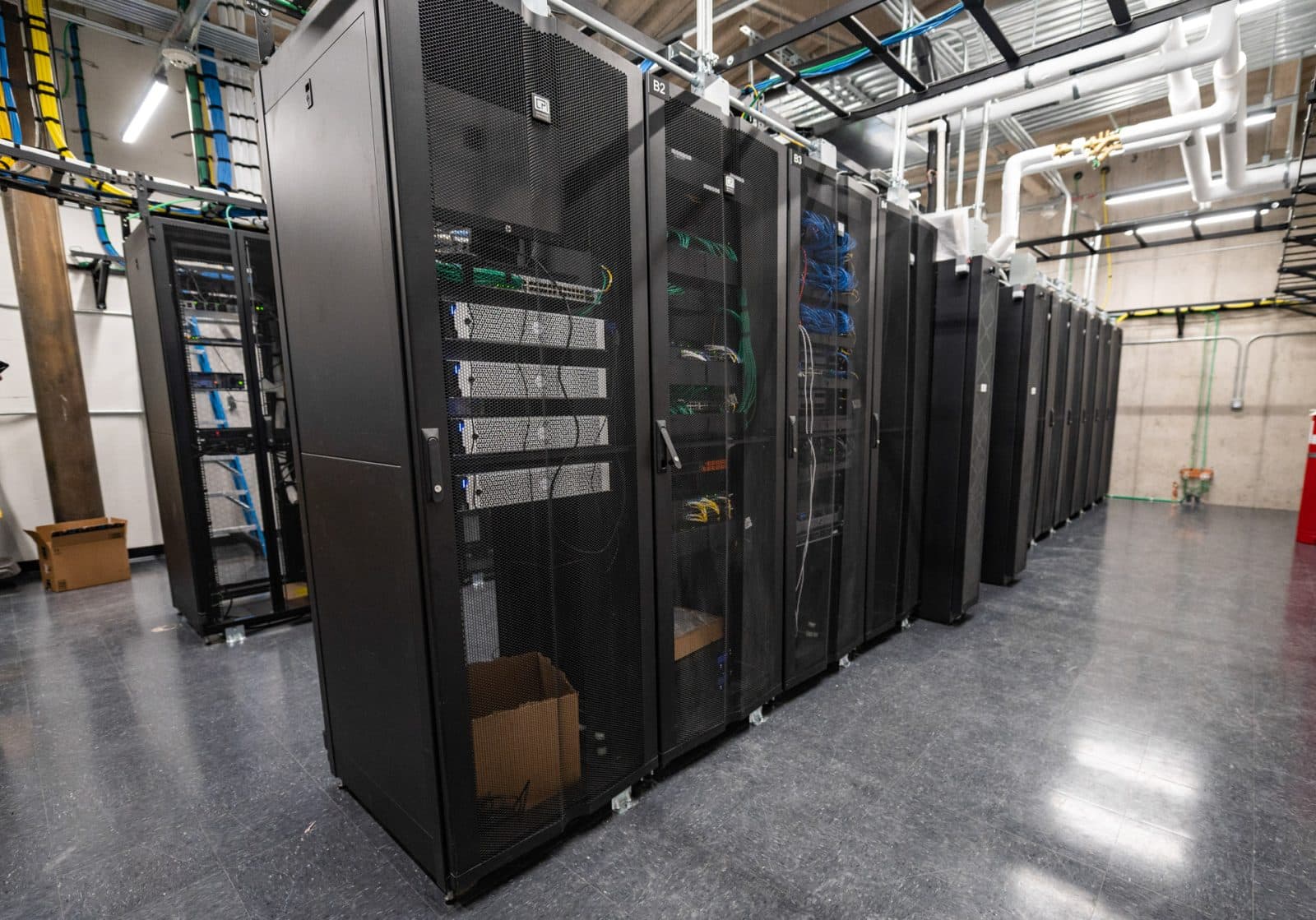

Telecommunications Rooms and Why They Matter
How telecommunications rooms can contribute to the function of a building
A telecommunications room consolidates connectivity from outside service providers and all network-connected nodes within a building. They are what makes our internet connectivity, email, phone calls, virtual meetings, instant messaging, video conferencing, and wireless access possible. These are critical rooms for a building’s functionality.
Properly designed telecommunications rooms ensure that technology services are available with as much uptime as possible.

Design elements that make your telecommunications room work for you
Here are 12 design elements that make your project’s telecommunications room function properly:
- Room Size. Make sure your room is an adequate size for the required number of equipment racks/cabinets. Each rack or cabinet needs a minimum of one meter of clearance in the front and back. General guidelines for sizing rooms are:
- 10 x 8 ft. if the room is serving 5,000 sq. ft. or less.
- 10 x 9 ft. if the room is serving between 5,000 sq. ft. and 8,000 sq. ft.
- 10 x 11 ft. if serving between 8,000 sq. ft. and 10,000 sq. ft.
- Location Within the Building. The room will need hallway access without any overhead utility pipes. Ideally, it should be centrally located and vertically aligned between floors.
- Security. Telecommunications equipment needs a secure, dedicated space. Typically, these doors are equipped with card readers to limit access.
- Environmental Control. There should be independent controls within each telecommunications room. This assures all equipment will stay within its high and low operating temperatures and humidity.
- Power. Include dedicated circuits with circuit labels.
- UPS/EM Power. In case of emergencies and power outages, you should have access to an uninterruptible power supply within the telecommunications room. An emergency power source, such as a generator that serves the building, could work in addition to the uninterruptible power supply.
- Grounding and Bonding. You’ll need to install primary bonding busbar and secondary bonding busbar (PBB or SBB) and bond conductors to all room elements, such as ladder racks, cabinets, equipment racks, and active equipment.
- Overhead Cable Management. You can use ladder racks to manage cable routing.
- Rack Cable Management. Use vertical and horizontal cable management within the equipment racks/cabinets.
- Room Construction. For durability, use fire-resistant plywood walls. Walls need to extend to the deck above with a 10 ft. minimum height. The ceiling should be open to the deck above.
- Flooring. Use anti-static flooring such as vinyl composite tile (VCT).
- Lighting. Locate lighting fixtures a minimum of 8.5 ft. above the finished floor with a minimum of 50 ft. candles.
Getting these design elements right requires careful planning, coordination, and oversight. This process should start with schematic design and be further refined during design development. Your technology infrastructure’s increased reliability and scalability will pay dividends in the years ahead.
Have a project coming up? We can help design all the technology elements, including your telecommunications rooms.
Learn more about our Information and Communications Technology
